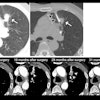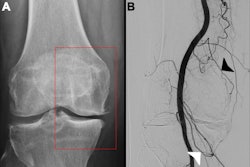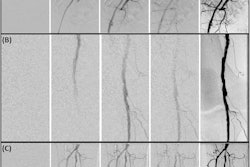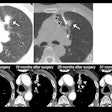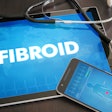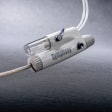AI-based software initially developed for television can protect patient privacy during remote guidance of interventional radiology procedures, according to research published July 22 in the Journal of Vascular and Interventional Radiology.
Researchers led by Takumi Oshima, MD, PhD, of National Cancer Center Hospital in Tokyo, Japan, believe the software could facilitate wider adoption of remote procedure guidance, also known as telementoring or teleproctoring.
“By addressing privacy concerns, this approach may not only promote safer and broader adoption of telementoring but also contribute to expanding access to IR procedures and advancing the dissemination of IR practice,” the authors wrote.
Although telementoring has demonstrated educational and clinical value, widespread adoption in IR remains limited as of 2025, according to the researchers.
Oshima and colleagues implemented BlurOn facial blurring software (Nippon Television Network and NTT Data), which was originally developed to blur individuals appearing incidentally on television broadcasting but has since been adapted for medical settings. The software can also mask areas of the video demarcated using QR codes, which effectively obscures screen-displayed sensitive information, according to the researchers.
“Importantly, all patient identifiers -- such as facial features and on-screen data -- are removed before the video leaves the IR room, ensuring that telemonitoring can be conducted without compromising patient privacy,” the authors wrote.
The researchers first tested the effectiveness of the software in IR in a single-center, nonclinical proof-of-concept experiment. Next, they performed a multi-institutional clinical evaluation.
After the system’s ability to detect and mask personally identifiable visual evaluation was confirmed in the proof-of-concept assessment, they then utilized software during two clinical procedures -- thoracic draining and central venous port insertions -- at their institution. A remote collaborator at the same hospital reviewed videos that were anonymized by the software.
In the second part of the study, the software was used during two procedures -- hepatic arterial infusion chemotherapy and a central venous port insertion -- performed at two collaborating institutions. The videos from these procedures were remotely viewed at their hospital.
The researchers concluded that all four procedures were successfully completed.
“In each case, video transmission had minimal delay, and both operator and remote viewer evaluations were favorable,” the researchers wrote. “The setup was straightforward and nondisruptive to IR workflow, and image quality was deemed sufficient for procedural guidance. Both parties highlighted the educational benefit and overall utility of telementoring using this system.”
The full article can be found here.



